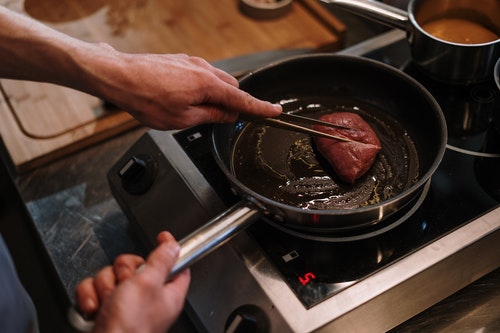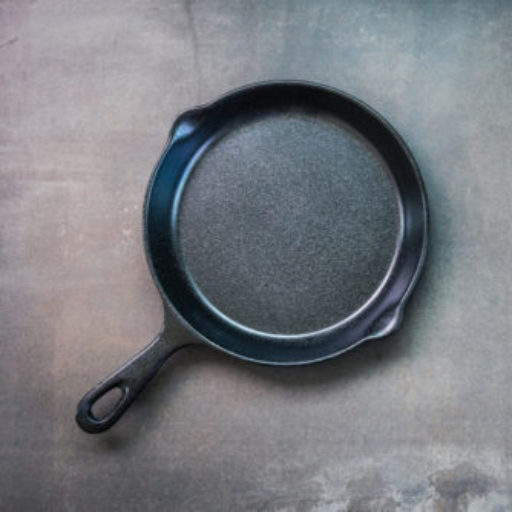When it comes to cooking, a cast iron skillet is a game-changer. Its ability to retain heat, its natural non-stick surface, and its durability make it a favorite among home cooks and professional chefs alike. To keep your skillet in top shape, one crucial step is knowing how to oil a cast iron skillet. In this comprehensive guide, we’ll walk you through the process, offering tips and insights to ensure your skillet remains a treasured kitchen tool for years to come.

Understanding the Importance of Seasoning
Before diving into the specifics of oiling a cast iron skillet, it’s essential to understand seasoning. Seasoning is a layer of polymerized oil baked onto the skillet, providing a natural, non-stick surface. This not only enhances your cooking experience but also protects the skillet from rust and wear.

Choosing the Right Oil
Types of Oils to Consider
When selecting an oil for seasoning your skillet, it’s crucial to choose one with a high smoke point. Some popular choices include:
- Flaxseed oil
- Vegetable oil
- Canola oil
- Grapeseed oil
Each of these oils has its benefits, but flaxseed oil is often recommended for its ability to create a hard, durable seasoning layer.
Why High Smoke Point Matters
A high smoke point ensures that the oil wont break down and smoke during the seasoning process. This helps in creating a smooth, non-stick surface that can withstand high cooking temperatures.

Steps to Properly Oil Your Cast Iron Skillet
Step 1: Clean Your Skillet
Ensure your skillet is clean before you begin. If it’s new, rinse it with warm water and dry it thoroughly. For older skillets, use a brush and mild soap to remove any residue.
Step 2: Apply the Oil
Pour a small amount of your chosen oil onto the skillet. Use a paper towel to spread the oil evenly across the surface, ensuring it’s applied to both the interior and exterior of the skillet. Be sure to remove any excess oil, as too much can lead to a sticky residue.
Step 3: Heat the Skillet
Place the oiled skillet in a preheated oven at 375F (190C) for one hour. This process allows the oil to polymerize, forming the protective layer known as seasoning.
Step 4: Cool Down
Once the hour is up, turn off the oven and let the skillet cool inside the oven. This gradual cooling helps the seasoning to set properly.

Maintaining Your Cast Iron Skillet
Regular Cleaning
After each use, clean your skillet with warm water and a brush. Avoid using soap as it can strip away the seasoning. Instead, opt for a salt scrub for stubborn residues.
Periodic Re-Oiling
To keep your skillet in top condition, periodically re-oil it following the steps above. A well-maintained skillet can last for generations, providing tremendous cooking results.
Common Mistakes to Avoid
Using Too Much Oil
Applying too much oil during the seasoning process can lead to a sticky, gummy surface. It’s better to apply thin, even coats.
Skipping the Heating Step
Heating the skillet is crucial for allowing the oil to bond with the cast iron. Skipping this step will result in a poorly seasoned skillet that won’t perform as well.
Not Cleaning Properly
Allowing food residue to build up can compromise the non-stick surface of your skillet. Always clean your skillet promptly after use and re-oil as necessary.
Additional Tips for Cast Iron Care
Use the Right Utensils
When cooking with your skillet, use wooden or silicone utensils to avoid scratching the seasoning.
Store Properly
To prevent rust, store your skillet in a dry place. Consider placing a paper towel between stacked skillets to absorb any moisture.
Conclusion
Knowing how to oil a cast iron skillet is an essential kitchen skill that can significantly improve your cooking experience. By choosing the right oil, following the proper steps, and maintaining your skillet, you’ll enjoy the benefits of this versatile cookware for years to come.
For more tips on cast iron care, check out this perfect fried egg recipe.
FAQs
How often should I oil my cast iron skillet?
It’s recommended to oil your cast iron skillet after each use to maintain its non-stick surface and prevent rust.
Can I use olive oil for seasoning?
Olive oil is not ideal for seasoning because of its low smoke point. It’s better to use oils with high smoke points like flaxseed or canola oil.
Is it safe to use soap on my cast iron skillet?
While it’s generally advised to avoid soap, a mild soap can be used occasionally if needed. However, make sure to re-oil the skillet afterwards.
For more advanced cleaning tips, visit clean cast iron.
As an Amazon Associate, I earn from qualifying purchases.

